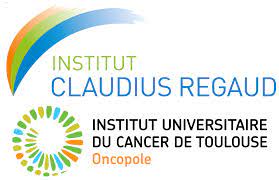Paediatric brain tumours: A review of radiotherapy, state of the art and challenges for the future regarding protontherapy and carbontherapy
Tumeurs cérébrales pédiatriques : revue de la littérature en radiothérapie, état de l’art et défis pour l’avenir en ce qui concerne la protonthérapie et la carbonethérapie
Résumé
Background and purpose
Brain tumours are the most frequent solid tumours in children and the most frequent radiotherapy indications in paediatrics, with frequent late effects: cognitive, osseous, visual, auditory and hormonal. A better protection of healthy tissues by improved beam ballistics, with particle therapy, is expected to decrease significantly late effects without decreasing local control and survival. This article reviews the scientific literature to advocate indications of protontherapy and carbon ion therapy for childhood central nervous system cancer, and estimate the expected therapeutic benefits.
Materials and methods
A systematic review was performed on paediatric brain tumour treatments using Medline (from 1966 to March of 2014). To be included, clinical trials had to meet the following criteria: age of patients 18 years or younger, treated with radiation, and report of survival. Studies were also selected according to the evidence level. A secondary search of cited references found other studies about cognitive functions, quality of life, the comparison of photon and proton dosimetry showing potential dose escalation and/or sparing of organs at risk with protontherapy; and studies on dosimetric and technical issues related to protontherapy.
Results
A total of 7051 primary references published were retrieved, among which 40 clinical studies and 60 papers about quality of life, dose distribution and dosimetry were analysed, as well as the ongoing clinical trials. These papers have been summarized and reported in a specific document made available to the participants of a final 1-day workshop. Tumours of the meningeal envelop and bony cranial structures were excluded from the analysis. Protontherapy allows outstanding ballistics to target the tumour area, while substantially decreasing radiation dose to the normal tissues. There are many indications of protontherapy for paediatric brain tumours in curative intent, either for localized treatment of ependymomas, germ-cell tumours, craniopharyngiomas, low-grade gliomas; or panventricular irradiation of pure non-secreting germinoma; or craniospinal irradiation of medulloblastomas and metastatic pure germinomas. Carbon ion therapy is just emerging and may be studied for highly aggressive and radioresistant tumours, as an initial treatment for diffuse brainstem gliomas, and for relapse of high-grade gliomas.
Conclusion
Both protontherapy and carbon ion therapy are promising for paediatric brain tumours. The benefit of decreasing late effects without altering survival has been described for most paediatric brain tumours with protontherapy and is currently assessed in ongoing clinical trials with up-to-date proton devices. Unfortunately, in 2015, only a minority of paediatric patients in France can receive protontherapy due to the lack of equipment.
Objectifs
Les tumeurs cérébrales sont l’indication de radiothérapie pédiatrique la plus fréquente, avec des effets tardifs fréquents : cognitifs, osseux, visuels, auditifs et hormonaux. En raison de leur balistique exceptionnelle, les faisceaux de particules pourraient apporter une meilleure protection des tissus sains sans diminuer le contrôle local et la survie. Cet article est une revue de la littérature scientifique ayant pour but de proposer les indications de protonthérapie et de thérapie par ions carbone pour les tumeurs cérébrales pédiatriques et d’estimer les bénéfices thérapeutiques escomptés.
Matériel et méthodes
Une revue systématique a été réalisée sur les essais cliniques de radiothérapie des tumeurs pédiatriques en utilisant Medline (de 1966 à mars 2014), selon les critères suivants : patients âgés de 18 ans ou moins, ayant reçu une radiothérapie et comportant des données de survie. Les études sur les fonctions cognitives, la qualité de vie, la comparaison dosimétrique photons–protons ont également été incluses.
Résultats
Sur 7051 références primaires publiées, 40 études cliniques et 60 articles de qualité de la vie et dosimétrie ont été analysés, ainsi que les essais cliniques en cours. Ces documents ont été condensés et présentés dans un document spécifique mis à la disposition des experts participant à un atelier final d’une journée. Il existe de nombreuses indications de protonthérapie pour les tumeurs cérébrales pédiatriques à visée curative : pour le traitement localisé des épendymomes, tumeurs germinales, craniopharyngiomes, gliomes de bas grade, pour l’irradiation pan-ventriculaire des germinomes purs non-sécrétant et pour l’irradiation crâniospinale des médulloblastomes et germinomes purs métastatiques. La thérapie par ions carbone est en train d’émerger et pourrait être étudiée pour les tumeurs très agressives et radiorésistantes, tels les gliomes du tronc cérébral diffus, et les rechutes des gliomes de haut grade.
Conclusion
Pour les tumeurs cérébrales pédiatriques, protonthérapie et thérapie par ions carbone sont prometteuses. L’avantage de diminuer les effets tardifs sans altérer la survie a été décrit pour la plupart des tumeurs cérébrales pédiatriques avec la protonthérapie et est en évaluation dans des essais cliniques en cours. Actuellement, en France, une minorité de patients pédiatriques reçoit une protonthérapie en raison du manque d’équipement.
